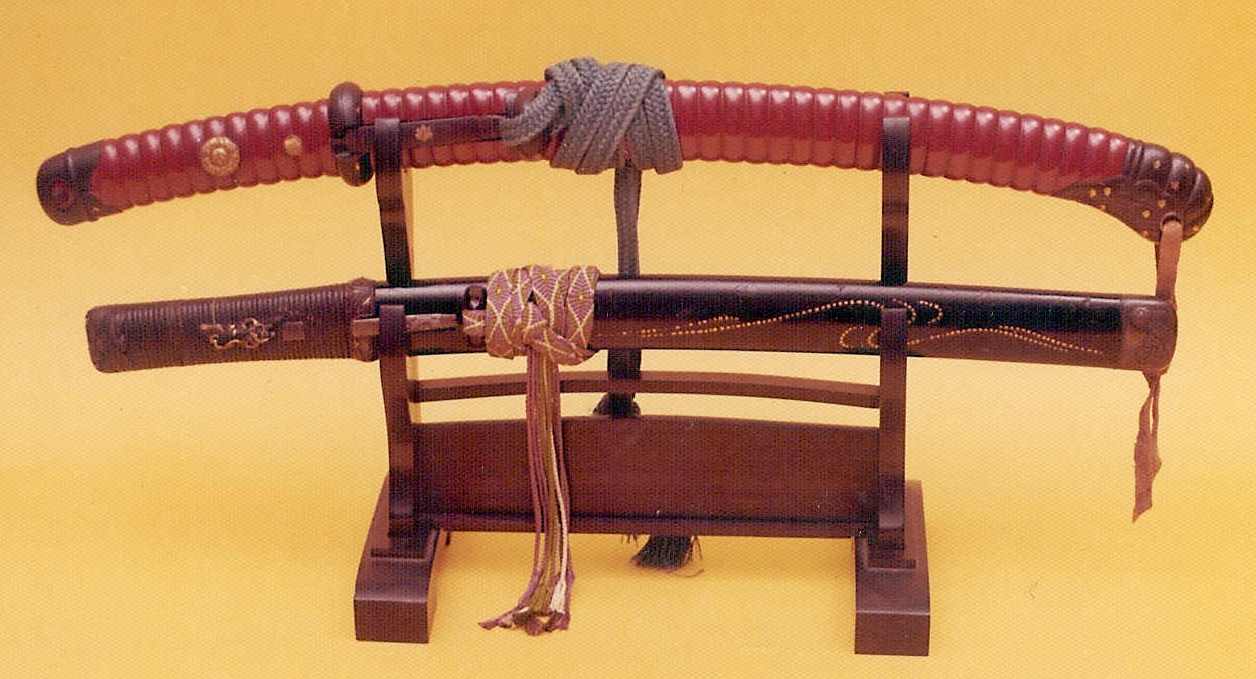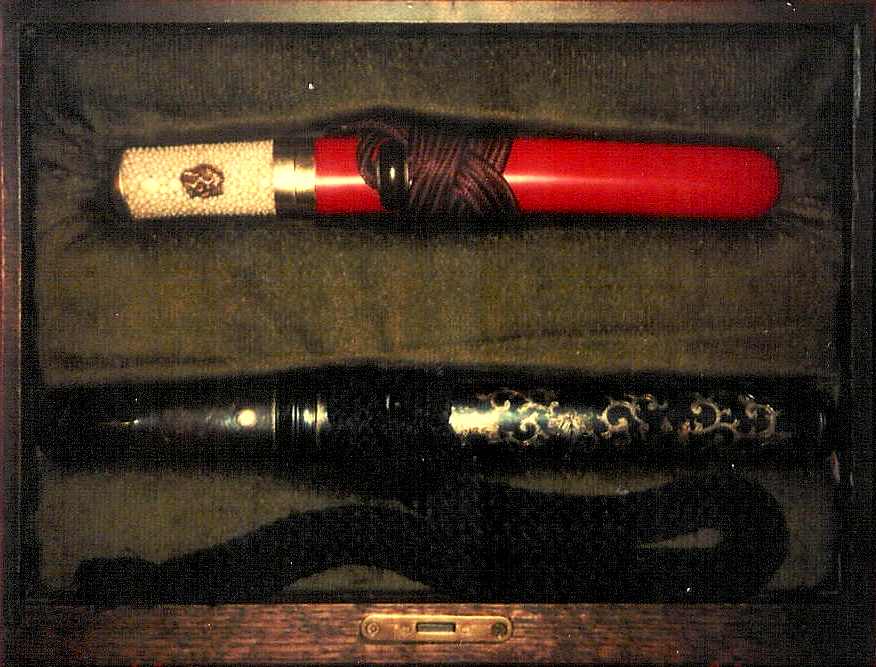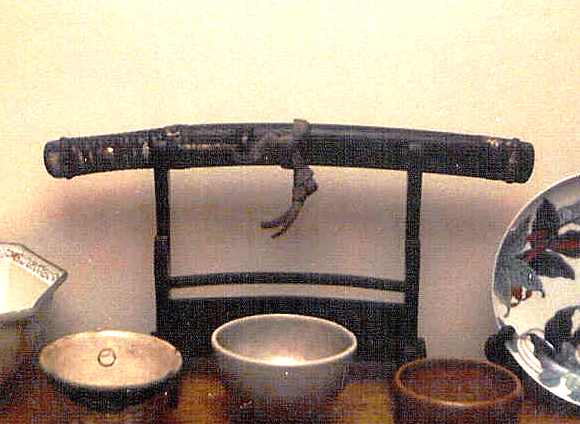|
||||||||||||||||||||||||||||||||||||||||||||||||||||
Col Hartley's Collection
|
||||||||||||||||||||||||||||||||||||||||||||||||||||
|
||||||||||||||||||||||||||||||||||||||||||||||||||||
|
||||||||||||||||||||||||||||||||||||||||||||||||||||
|
||||||||||||||||||||||||||||||||||||||||||||||||||||
|
||||||||||||||||||||||||||||||||||||||||||||||||||||
|
||||||||||||||||||||||||||||||||||||||||||||||||||||
|
||||||||||||||||||||||||||||||||||||||||||||||||||||
 Osumi no kami Hiromitsu |
.jpg) Nagamitsu (Oei Bizen?) Polished. Mounts en-suite Mino Goto Gold & silver lacquer flowers on aogai saya. Mounts excellent but obviously old. |
.jpg) Mumei (Masahide school?) Ivory fuchi-kashira signed Masatsugu (famous netsuke maker). Silver dragon menuki, horn "points" on rattan wrapped saya high relief mother of pearl carved dragon kozuka. Polished |
.jpg) Mumei (Bingo Masazane origami). Polished. Metal mounts all top quality Higo (gold on iron) - stippled lacquer saya. |
.jpg) Mumei (Oei Uda school). Polished. Good Nara shakudo fuchi-kashira, good menuki, tsuba Yamagane "dragon in-round" |
 Muramasa. Beautiful semi-hitatsura blade, polished. Existing holograph with certification by Dr. Homma. |
 Noshu Kanemitsu. Moroha zukuri. Polished. |
.jpg) Mumei (Mishina Ujifusa). Beautiful polish and classic Ujifusa Hamon. |
.jpg) Mumei (Mishina?) Ens-suite copper mounts, excellent |
 Yoshimitsu (Tosa school - nearly exact copy of shape & style of Awataguchi Yoshimitsu). Polished. All lacquer mounts with Kiku on saya & Kiku menuki. |
.jpg) Hisamichi (Go-Kaji). Hachiwara mounts fair. |
|
|
 |
 Front |
 Back |
 Gassan Sadakazu. Polished, ayasugi hada. Gold "points" throughout on mounts, excellent coiled Goto dragon menuki. Smallest Kwaiken Col Hartley had seen. |
 |
 |
Return to
Metropolitan Monroe Museum Main Page
Website created by Dean S. Hartley III.